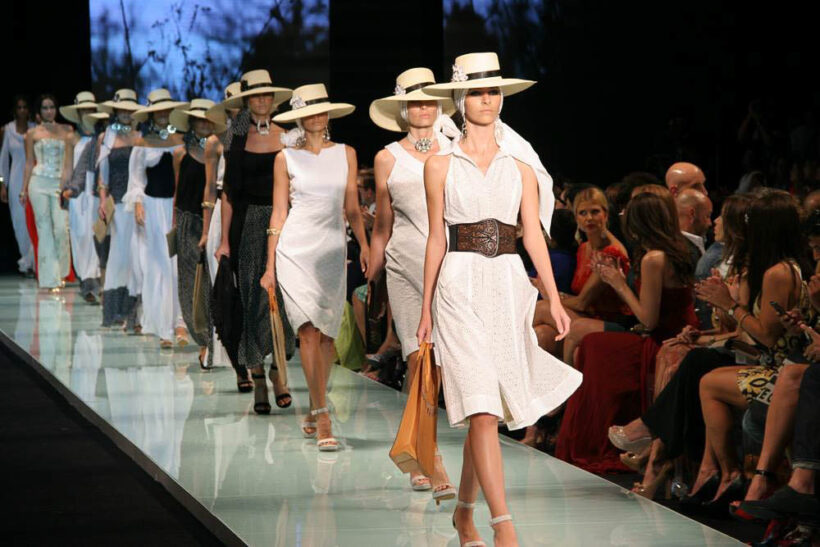 By DR. MIRIAM ACZEL
By DR. MIRIAM ACZEL
The clothing industry’s impact on carbon emissions is huge, and growing, with emission likely to increase 50% by 2030.
At the same time, the number of ‘fashion cycles’ for clothing production has equally increased, growing from only two per year to now as many as 50-100 cycles. On the other hand, the COVID-19 crisis has shown that we can rethink our current consumption patterns, and the move towards creating Green New Deals across the globe provide an excellent opportunity. So while we work to rebuild our economies and heal our communities, it’s a great time to rethink how we create goods, and move towards a more sustainable, closed-loop model.
Leveraging the Power of Collective Action
There is clear power in collective action, and we as consumers have the potential to make a difference moving towards a circular economy, where we extend the lifetime of resources and goods as long as possible. By changing perceptions of what we need in our closets and improving our understanding of how our purchase habits affect the environment, we can be part of a solution. Moreover, 2020 and the COVID-19 pandemic brought increased environmental awareness and environmental stewardship and meant that even more customers are now looking to purchase more sustainably at the same time as trying to buy from smaller brands and individuals.
As consumers are becoming more aware of the high environmental costs of the fashion industry—and younger activists are taking to the streets to raise awareness of climate change impacts, pollution, and waste—new and more sustainable brands and projects are developing solutions to increase recycling of materials and promote a more circular industry in order to prevent the several billions of tons of clothing that end up in landfills each year. Sustainable brands and other circular solutions also reduce the significant amounts of water, land and energy used in production of clothing.
‘Adopt, Don’t Shop’ – Reducing Waste Through Reuse
Each year, nearly 30 billion pounds of clothing and other household items end up landfill—and of that, over 95% could be reused or recycled. Consumers may have the power to make an important difference by reducing waste through reuse. In a previous article, I highlighted how Savers, one of the biggest thrift store chains in North America, is taking big strides to provide secondhand items at a low cost and at the same time helping change the way consumers think about sustainability, reuse, and closing the clothing loop. For example, Savers Rethink Reuse initiative works to raise awareness through a wide range of activities including interactive art installations in cities across North America, to help educate consumers about challenges of clothing waste.
In the effort to help make a positive difference with our dollars, here are a few companies that are making strides to ‘close the loop’ and reduce waste from the fashion industry.
A Second Life for London’s Fire Hoses
According to luxury brand Elvis & Kresse, for nearly 20 years, they have been “rescuing raw materials, transforming them into luxury lifestyle accessories and donating 50% of profits back to charities.” As they founders explain, in 2005 they had a “chance encounter” with London’s Fire Brigade and when they learned that London’s damaged and decommissioned hoses were sent to landfill, they set up Elvis & Kresse as a ‘rescue mission’ to remedy this loss. By saving London’s damaged firehoses—which are an ideal material, thanks to their durability, iconic red or yellow colors, their rich luster, the history of saving lives—Elvis & Kresse has found a creative way to give new life to decommissioned materials. According to the company, their mission is to rescue materials, transform them into beautiful things, and then donate 50% of the profit. You can watch a video of their story here.
Since 2005, none of London’s iconic fire hoses have gone to landfill–and well over 200 tons of material has been reclaimed and turned into beautiful bags, wallets and other items.
More recently, in 2017 the Burberry Foundation partnered with the company to work towards solving the larger problem of leather wasted globally. This multi-year partnership has committed to ensure that 120 tons of leather off-cuts from Burberry’s manufacturing processes are turned into new luxury products, which are both designed and sold by Elvis & Kresse.
Reducing Environmental Impact, One Pair of Jeans at a Time
Levi’s, the iconic jeans brand, is making strides to reduce its carbon and water footprint and raising awareness about the environmental impacts of the classic garment.
The production lifecycle of pair of jeans—from growing and dyeing the cotton to finishing touches—takes over 2,000 gallons of water—just to make one pair of pants! Levi’s focuses on the final production processes to reduce water use wherever possible through the Water<Less collection, which the company states reduces water usage by 96%. Moreover, because Levi’s is an iconic figure in the denim industry, initiatives like this can have a wider impact, potentially encouraging other companies to follow their lead. On top of that, the brand publicly shares its in-depth sustainability commitments throughout the product lifecycle.
Lower-Impact Fashion Alternatives
Alternative Apparel, a company that focuses on manufacturing of more casual wardrobe essentials like sweatshirts, t-shirts, leggings, and more, makes a point of using recycled textiles in addition to organic cotton. Additionally, Alternative Apparel employs only sustainable packaging and clothing dyes with low environmental impacts, and commits to strict ethics and labor standards in the various factories the company uses to source clothing.
Dr. Miriam Aczel is Leaders in Energy’s Director of Communications. Miriam is a postdoctoral scholar at the California Institute for Energy & Environment (CIEE) based at UC Berkeley, working on the Oakland Ecoblock project. She is also currently an Honorary Research Associate at Imperial College London’s Centre for Environmental Policy, with a focus on international energy science and policy, with a focus on mitigation of environmental and health impacts of shale gas. Miriam earned her PhD at Imperial College London in 2020, where she was a President’s PhD Scholar.She is also co-founder and co-director of the Amir D. Aczel Foundation for Research and Education in Science and Mathematics, a nonprofit based in Cambodia.



Leave a Reply